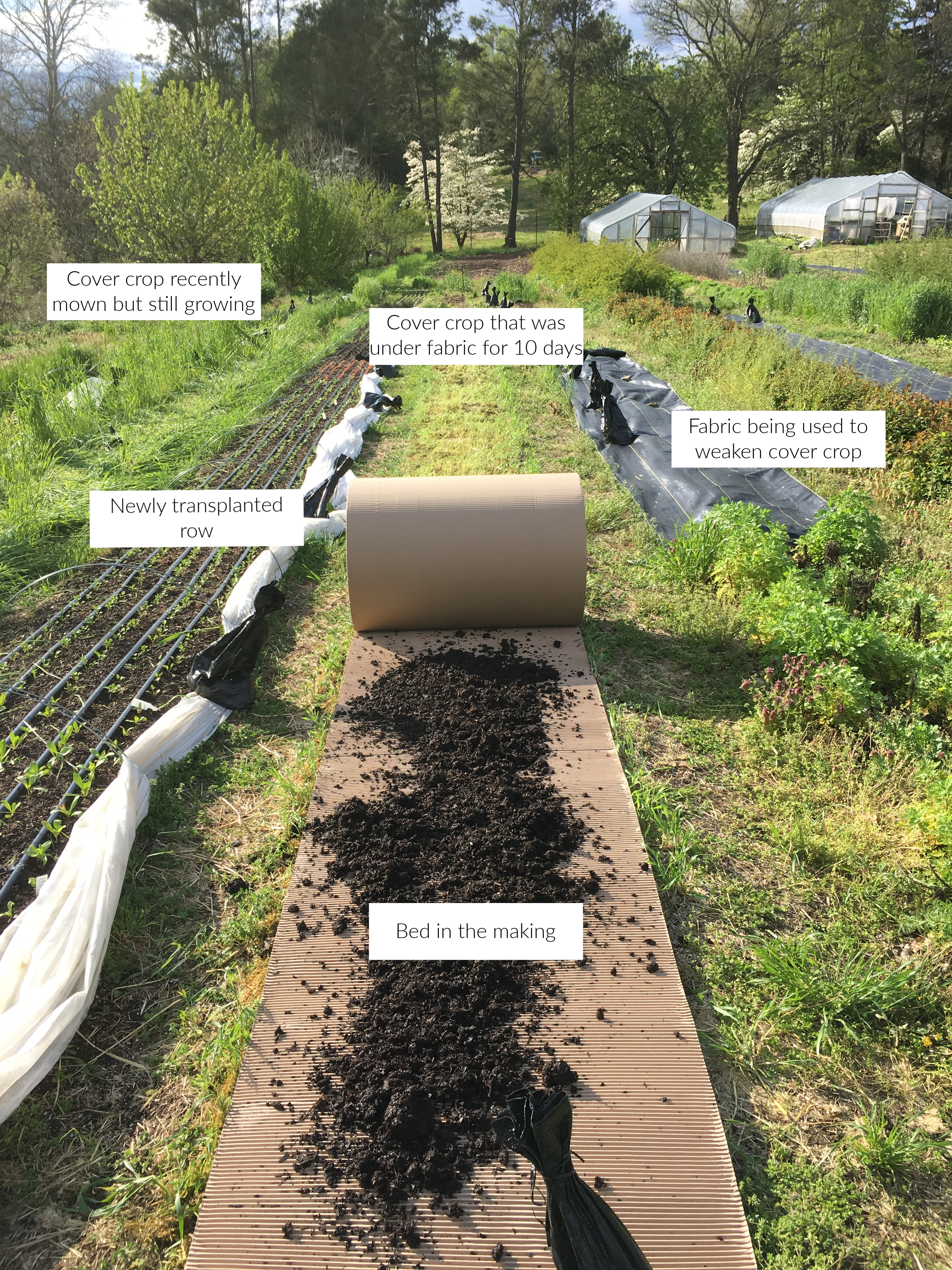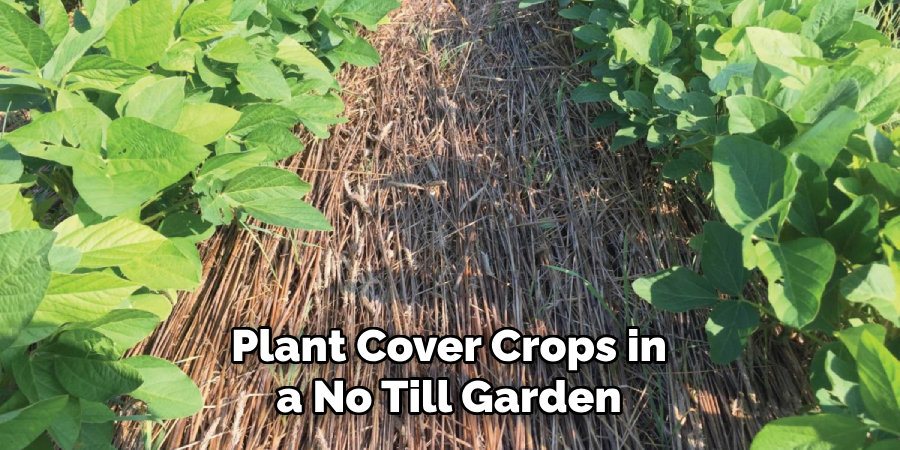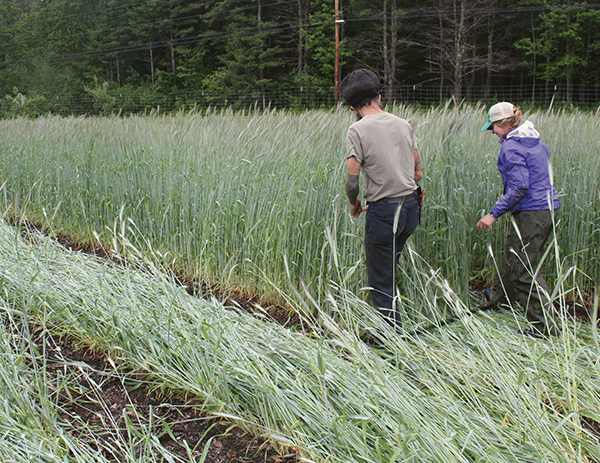Cover crops can be effectively used in a no-till garden by planting them after the main crop has been harvested, allowing them to protect and enrich the soil. By sowing cover crops such as legumes, grasses, or clovers, the soil will be protected from erosion, weeds will be suppressed, and nutrients will be added when the cover crops are turned into the soil.
This sustainable practice improves soil health, promotes biodiversity, and reduces the need for synthetic fertilizers, making it beneficial for both the garden and the environment.

Credit: lovenfreshflowers.com
Benefits Of Using Cover Crops In A No Till Garden
Cover crops are an essential component for improving soil health in a no-till garden. These crops help enhance nutrient cycling, ensuring plants receive the necessary nourishment. Additionally, cover crops suppress weeds, reducing the need for chemical weed control. They also contribute to pest control, creating an unfavorable environment for harmful insects.
With cover crops, soil erosion is minimized, and moisture retention is optimized, resulting in healthier plants and increased productivity. These crops also add organic matter to the soil, promoting its structure and fertility. Farmers and gardeners benefit from using cover crops by saving time, reducing labor, and improving overall soil quality.
Incorporating cover crops in a no-till garden is a sustainable and environmentally friendly practice that yields numerous advantages for both plants and soil.
How to Use Cover Crops in a No Till Garden: Step by Step Guide
Choosing The Right Cover Crops For Your No Till Garden
Choosing the right cover crops for your no till garden requires careful consideration of various factors. Popular cover crop options include legumes like clover and vetch, grasses such as rye and oats, and brassicas like mustard and radish. When selecting cover crops, think about the specific goals you have for your garden, such as improving soil fertility, controlling weeds, or attracting beneficial insects.
Consider the climate and growing conditions in your area, as different cover crops thrive in different environments. It’s also important to determine the ideal cover crop mix for your garden based on the specific needs of your plants. Experiment with different combinations to find the ones that work best for you.
By utilizing cover crops effectively, you can enhance the health and productivity of your no till garden.
Incorporating Cover Crops Into Your No Till Gardening Practices
Incorporating cover crops into your no till gardening practices requires careful timing and planning. Planting cover crops at the right moment is crucial for their success. To establish cover crops, there are several methods you can employ. Whether you prefer broadcasting, drilling, or interseeding, each technique has its own benefits.
Once the cover crops have grown, it is essential to manage and terminate them effectively. This will ensure you reap the maximum benefits from them. Depending on your goals, you may choose to mow, cut, or roll the cover crops.
By incorporating cover crops into your no till garden, you can enrich the soil, suppress weeds, and improve overall soil health.
Maximizing The Effectiveness Of Cover Crops In No Till Gardens
Maximizing the effectiveness of cover crops in no till gardens involves utilizing cover crop residues as mulch. This practice helps to retain moisture, reduce weed growth, and improve soil health. Integrating cover crops with crop rotation is another beneficial strategy, as it helps prevent pest and disease buildup while providing various benefits to the soil.
To achieve cover crop success, implementing best management practices is essential. These practices include selecting appropriate cover crop varieties, properly planting and terminating cover crops, and understanding the optimal timing for each stage. By following these guidelines, you can effectively use cover crops in a no till garden to enhance soil fertility, promote sustainable agriculture, and maximize yields.
Common Mistakes To Avoid When Using Cover Crops In A No Till Garden
Common mistakes when using cover crops in a no-till garden include overplanting or underplanting them. Neglecting to monitor and adjust the growth of cover crops is another common error. It is important to keep an eye on their progress and make any necessary adjustments.
Additionally, failing to adequately control cover crop winter survival can lead to poor results in the spring. To avoid these mistakes, start by properly estimating the correct amount of cover crops needed for your garden. Regularly check on their growth and adjust the planting density if necessary.
Finally, provide proper protection during the winter months to ensure a successful cover crop season. Following these guidelines will help you make the most of cover crops in your no-till garden.
Frequently Asked Questions For How To Use Cover Crops In A No Till Garden
What Are The Benefits Of Using Cover Crops In A No Till Garden?
Cover crops in a no till garden provide numerous benefits such as preventing soil erosion, suppressing weeds, improving soil fertility, and enhancing water retention. Additionally, they can break up compacted soil, attract beneficial insects, and add organic matter to the soil.
Which Cover Crops Are Suitable For A No Till Garden?
Several cover crops thrive in a no till garden, including winter rye, crimson clover, hairy vetch, buckwheat, and alfalfa. These crops offer deep root systems, quick growth, and good biomass production, enriching the soil while suppressing weeds.
How Do I Plant Cover Crops In A No Till Garden?
To plant cover crops in a no till garden, first remove any existing vegetation. Then, broadcast or drill seed the cover crop into the soil at the recommended seeding rates. Lightly rake the soil to ensure good seed-to-soil contact, and water thoroughly.

Can Cover Crops Be Incorporated Into The Soil Of A No Till Garden?
No till gardeners usually do not incorporate cover crops into the soil. Instead, they rely on natural processes such as winter freezing and thawing or the decomposition of cover crops on the soil surface. This allows the cover crop’s nutrients and organic matter to be gradually absorbed by the soil.
Conclusion
Cover crops are a valuable tool for maintaining the health and productivity of a no-till garden. By planting these crops during fallow periods, gardeners can prevent soil erosion, suppress weeds, improve soil fertility, and promote beneficial insects and microorganisms. The use of cover crops also helps to enhance water retention, reduce the need for chemical fertilizers and pesticides, and create a more sustainable and environmentally friendly garden.
The selection of cover crops should be based on the specific needs and conditions of the garden, and careful consideration should be given to their growth habits, nutrient requirements, and potential benefits. Whether you are an experienced gardener or an amateur enthusiast, incorporating cover crops into your no-till garden can greatly enhance its overall health and productivity.
So, start experimenting with cover crops in your garden to reap the many benefits they provide. Happy gardening!

